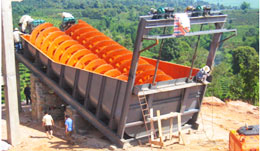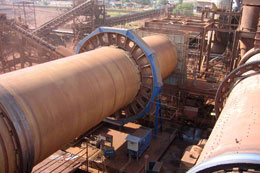-
Sand Making Crusher
- PCL-Vertical Shaft Impact Crusher
- SBM Hydraulic VSI Crusher
- VSI5X Series Impact Crusher
Salt mining process
Salt introduction

Salt, or sodium chloride, is a chemical compound with the chemical formula NaCl; for every gramme of salt, almost 40 per cent is sodium (Na), the sixth most abundant element on Earth, and a little over 60 per cent is chlorine (Cl). Salt is a white, crystalline compound, has low toxicity and is completely non-flammable. Salt is added to food as a flavour enhancer (table salt) and is a daily diet requirement of humans. It is commonly applied to roads and pavements as a de-icer, used as a feedstock for chlorine and sodium hydroxide (caustic soda) manufacture both of which are used to made ‘consumer-related end-use products’ such as polyvinyl chloride (PVC), a plastic made from chlorine, and paper pulping chemicals manufactured from sodium hydroxide .
Salt mining equipments

A 100 to 200mm wide slot is cut at the base of the rock face using a machine called an undercutter, with a jib carrying a series of tungsten-carbide picks. The face is then drilled with a series of carefully sited holes, using an electro-hydraulic rotary drill. The holes are charged with explosives and the face is blasted, yielding between 750 and 1500 tonnes of broken rock salt. The rock is crushed into a manageable size, using a feeder-breaker. It is then carried on a conveyor belt to the main crusher at the ground surface, which breaks it down into smaller pieces, passing through a sieve or screen to ensure that it has reached the correct size for use in road de-icing.
SBM provide rock crushers, belt conveyors for salt mining.If you have interesting in our equpments, please contact us.
- Limestone Crusher
- Barite Crusher
- Granite Crusher
- Kaolinite Crusher
- Calcite Crushing
- Tombarthite Crusher Mill
- Bentonite Grinding Plant
- Basalt Ore Crusher
- Lignite Crusher Mill
- Silica Ore Crusher
- Tin Ore Mine
- Lead and Zinc Ore Crusher
- Ochre Crusher Mill
- Garnet Crusher
- Mica Crusher
- Asbestos Crusher
- Manganese Ore Crusher
- Talc Crusher Mill
- Feldspar Crusher
- Iron Ores Crusher
- Dolomite Crusher
- Quartz Crusher
- Gypsum Crusher
- Calcium Carbonate Grinding
- About Us
- |
- Service
- |
- News & Events
- |
- Contact Us
- |
- Resources
- |
- Showroom
Aggregate Crusher
Artificial Sand Making
Ballast Crushing Machine
Basalt Stone Crusher
Barite Mine Process
Beneficiation Plant
Bentonite Crusher
Bentonite Milling
Calcium Carbonate Crusher
Calcium Carbonate Grinding
Cement Grinding
Concrete Crusher
Coal Crusher
Copper Crusher
Cement Mill
Chrome Mining Process
Copper ore Beneficiation
Coal Processing
Coal Pulvarizer
Feldspar Crushing
Feldspar Grinding
Flotation Machine
Gold Crusher
Gold Mine Equipment
Gold Processing Machinery
Granite Crusher
Granite Crushing Machine
Granite Quarry Equipment
Gypsum Crusher
Gypsum Mining
Gypsum Powder Production
Iron Ore Beneficiation
Iron Ore Crusher
Kaolin Processing Plant
Limestone Crusher
Silica Sand Crusher
Iron Ore Mining Equipment
Cement Production Line
Talc Production Line
Quartz Crushing Machine
Limestone Mining Process
Manganese Benificietion
























